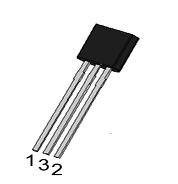Date:2025-06-24 Categories:Product knowledge Hits:300 From:Guangdong Youfeng Microelectronics Co., Ltd
6、 Installation steps:
When installing silicon carbide transistors, the following steps should be noted:
1. Preparation work: Firstly, confirm whether the model and specifications of the silicon carbide transistors used are correct, and check for any damage or missing items. At the same time, check whether the installation accessories such as radiator, insulation gasket, and screws are complete.
2. Preparation of radiator: Place the radiator in the installation position and fix it with screws to ensure that the surface of the radiator is flat, clean, and can dissipate heat well.
3. Installation of insulation gasket: Place the insulation gasket on the radiator, ensuring that it is tightly attached to the radiator and will not move or slide.
4. transistors installation: Place the silicon carbide transistorsr on the insulating gasket, ensuring that the pins are aligned with the solder pads on the heat sink. Meanwhile, it is important to avoid applying excessive pressure to the pins of the transistor to prevent damage to the packaging.
5. Pin soldering: Use solder to solder the pins of the silicon carbide transistors to the solder pads on the heat sink, ensuring good soldering quality, bright and firm solder joints.
6. Insulation treatment: Place the insulation sheet above the silicon carbide transistors to protect it from external environmental influences. Ensure that the insulation sheet covers the entire transistors and is in close contact with the heat sink.
7. Fixed installation: Use screws to secure the insulation sheet and silicon carbide transistors to the heat sink, ensuring a firm and reliable installation.
8. Inspection and testing: After installation, conduct a visual inspection to ensure correct installation and no damage. Then, test the connection circuit and heat sink to ensure the normal operation of the silicon carbide transistors
7、 Testing method:
The testing methods for silicon carbide transistors mainly include static parameter testing and dynamic parameter testing. Static parameter testing includes testing the on voltage, off voltage, and leakage current of the device; Dynamic parameter testing includes testing the switching speed, switching loss, and reverse recovery time of the device.
8、 Development history:
Silicon carbidetransistors (SiC transistors ) is a type of transistor based on silicon carbide semiconductor material. It has high working temperature capability, high voltage bearing capacity, and high frequency characteristics, making it widely applicable in high-temperature and high-frequency applications.
The development history of SiCtransistors can be traced back to the 1950s. The earliest experiment was reported in 1962 by J. Balder and R. Meijer from Philips, who successfully prepared the earliest silicon carbide transistor. However, at that time, it was very difficult to prepare high-quality SiC materials, which limited the development of SiC transistors.
In the 1980s, with the advancement of material growth technology, the quality of SiC materials was significantly improved. Subsequently, researchers began to explore the performance and applications of SiC transistors. In 1994, Toshiba Corporation of Japan first commercialized SiC transistors, marking the beginning of the commercialization process of SiC transistors.
In recent years, with the further development of silicon carbide material preparation technology, the performance of SiC transistors has been continuously improved. It has been widely used in high-temperature, high-frequency, and high-voltage fields, such as energy conversion, power electronics, automotive electronics, and aerospace.

Previous: Classification, Structure, and Principle of MOSFET